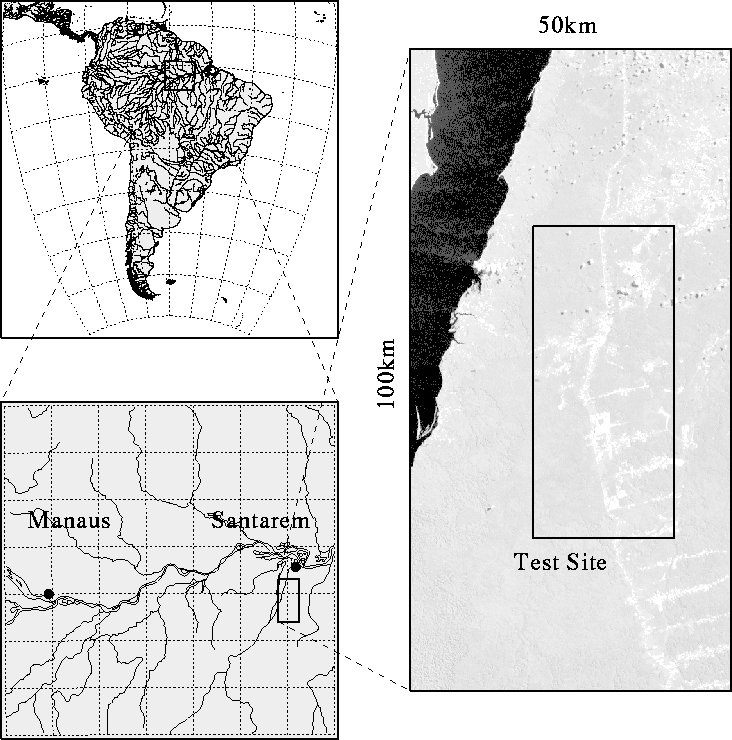The test site chosen for this analysis is located near the Tapajós National Forest, in the Pará State, Brazil.
The geographic coordinates of the upper left and lower right corners are, respectively, W ![]() , S
, S ![]() , and W
, and W ![]() , S
, S ![]() , corresponding to an area of about
, corresponding to an area of about ![]() km.
km.
The Brazilian tropical forest has undergone significant changes in the last decades. By 1978 a total of 1.5 milion hectares was deforested, while 4.26 milion hectares were deforested by 1991 (INPE, 1992). Many forest areas were converted to cattle pasture or crop fields, and some of them have been abandoned and are presently under regeneration.
The Tapajós region is one such area that exhibits such land cover types. Other reasons for choosing this test site is that there are several remote sensing data available for this area, and the relief in this area is relatively flat and therefore, topographic influences will not need to be considered.
Figure 1 shows the location of the Amazon region in South America, the position of a Landsat TM (band 5) image from 1993 within this region, and the location of the test site on the image. Rio Tapajós can be seen in black on the upper left of the image, primary forest is shown in grey, and disturbed forest, settlements and roads are in white. The Tapajós National Forest is located to the west of the main road (Cuiabá - Santarém Highway).

Figure 1: Location of test site: Tapajós National Forest and surroundings.
This area is very dynamic in terms of regeneration, and many times more than one land management regime before abandonment is observed; examples of such regimes are clearance by burning or felling, farming by grazing with cattle or growing of crops, etc. Though the history prior to abandonment probably has an influence in the microwave signature of regenerating areas, this effect will be assessed in future works; this paper will deal only with the relationship between regeneration stage and microwave signature.